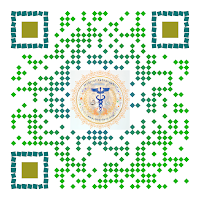An acute ST-elevation myocardial infarction occurs due to occlusion of one or more coronary arteries, causing transmural myocardial ischemia which in turn results in myocardial injury or necrosis. MI in general can be classified from Type 1 to Type 5 MI based on the etiology and pathogenesis.
·
Type
1 MI is due to acute coronary atherothrombotic myocardial injury with plaque
rupture. Most patients with STEMI and many with NSTEMI comprise this category.
·
Type
2 MI is the most common type of MI encountered in clinical settings in which is
there is demand-supply mismatch resulting in myocardial ischemia. This demand
supply mismatch can be due to multiple reasons including but not limited to presence
of a fixed stable coronary obstruction, tachycardia, hypoxia or stress. Other
potential etiologies include coronary vasospasm, coronary embolus, and
spontaneous coronary artery dissection (SCAD).
·
Type
3 MI include patient with Sudden cardiac death who succumb before any troponin
elevation comprise.
·
Types
4 and 5 MIs are related to coronary revascularization procedures like PCI or CABG.
The
American College of Cardiology, American Heart Association, European Society of
Cardiology, and the World Heart Federation committee established the following
ECG criteria for ST-elevation myocardial infarction STEMI:
·
New
ST-segment elevation at the J point in 2 contiguous leads with the cutoff point
as greater than 0.1 mV in all leads other than V2 or V3
·
In
leads V2-V3 the cutoff point is greater than 0.2 mV in men older than 40 years
old and greater than 0.25 in men younger than 40 years old, or greater than
0.15 mV in women
Patients
with a pre-existing left bundle branch block can be further evaluated using
Sgarbossa's criteria:
·
ST-segment
elevation of 1 mm or more that is concordant with (in the same direction as)
the QRS complex
·
ST-segment
depression of 1 mm or more in lead V1, V2, or V3
·
ST-segment
elevation of 5 mm or more that is discordant with (in the opposite direction)
the QRS complex







